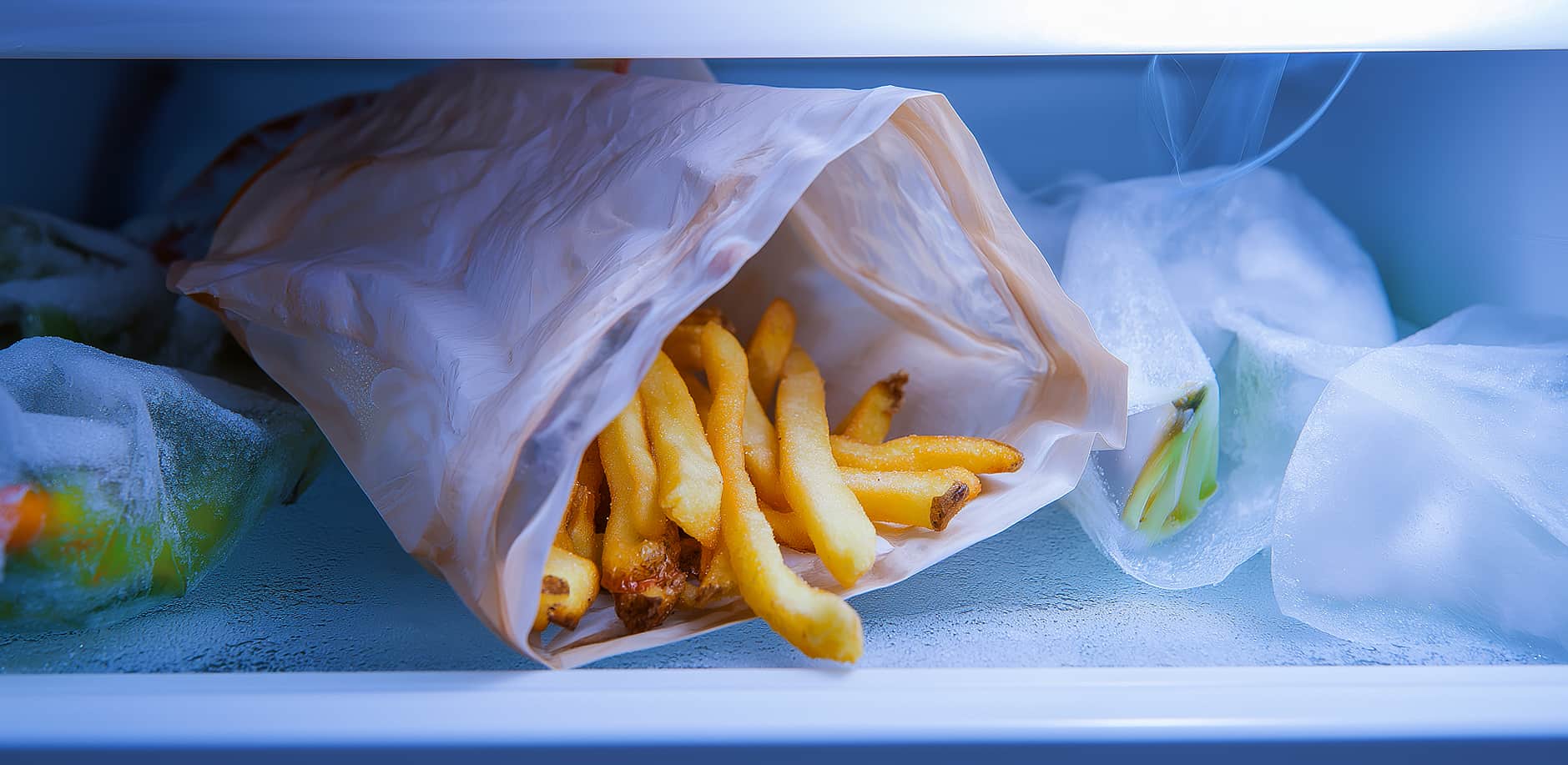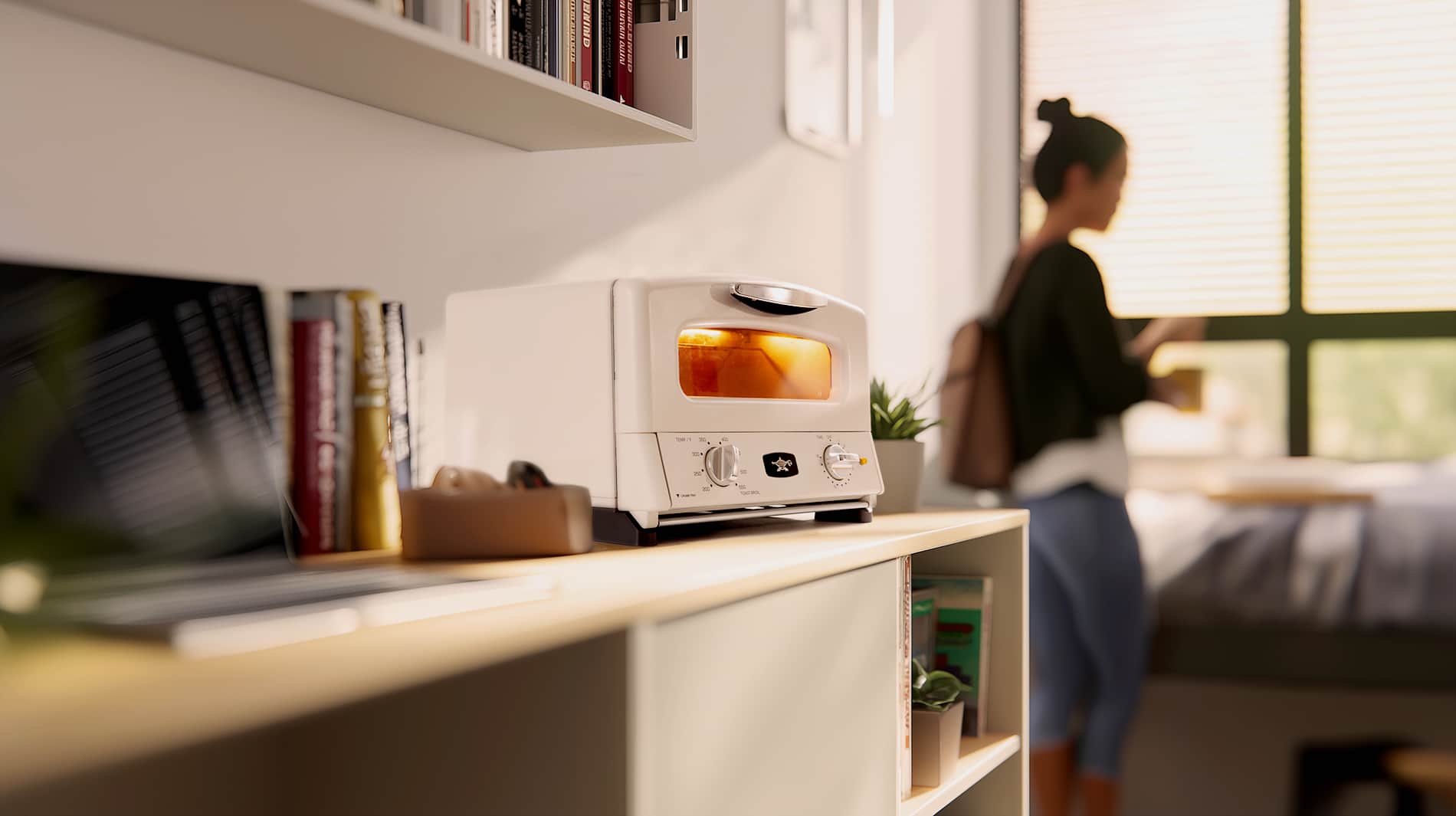Texture Science: Frozen vs. Fresh-Cut Fries
Commercial frozen French fries are engineered for optimal crispiness, whereas fresh-cut potato sticks baked at home often turn out limp or uneven. Achieving a crispy exterior with a fluffy interior is essentially a matter of controlling moisture and maintaining the starch structure in the potato. Food scientists note that the best fries start with potatoes high in dry matter (around 20–24% starch) and low in sugars. In processing, each potato's starch-to-water ratio is measured and adjusted – excess water is removed and excess sugar leached out – to create ideal conditions for crisp frying or baking. By contrast, a raw potato fry has a high internal water content and surface sugars that can cause steaming and quick browning before the exterior properly crisps.
Crucially, frozen fries have already been precooked one or more times before you bake them, essentially accomplishing the double-cooking technique needed for perfect fries. In the factory, the potato strips are typically blanched and then par-fried in oil before freezing. This means by the time you bake them, they've essentially been cooked twice (similar to the classic double-fry method), which is key to a crunchy outside and tender inside. One food science writer explains that frozen fries are "scientifically formulated" to deliver better texture because they come preserved at their prime preparation point. In fact, a controlled study found that French fries, which were specifically produced for oven-baking (i.e., preprocessed and frozen), achieved sensory crispness comparable to traditional deep-fried fries, while also absorbing less fat. This demonstrates that the industrial prep of frozen fries can replicate the coveted fry texture even with oven cooking.
Industrial Processing Methods That Boost Crispiness
Blanching (Precooking)

Blanching briefly precooks the potato strips in hot water or steam. This:
- Gelatinizes surface starches, helping create a crispy shell
- Leaches sugars and amino acids to prevent over-browning
- Softens pectin between potato cells for a fluffier interior
- Deactivates enzymes that cause discoloration
As you can see, it sets perfect conditions for fries to get brown evenly and bake up crisp without burning.
Partial Dehydration and Par-Frying
Next, processors:
- Dry the surface of the fries to reduce excess moisture
- Par-fry in oil at high heat to form a thin crust and initiate Maillard browning
- Replace surface water with a small amount of oil to enhance future crisping
This is why frozen fries often bake faster and more evenly than fresh-cut ones. That thin, pre-fried crust means the oven's heat goes straight to crisping, not drying.
Flash Freezing

Immediately after par-frying, the fries are rapidly frozen using blast freezers. This step:
- Preserves microstructure by forming small ice crystals (which don't rupture cell walls)
- Prevents water from escaping during baking, thus avoiding steam buildup
- Locks in the par-fried texture and surface oil
Slow freezing would damage the potato's texture and result in soggy fries. Flash freezing ensures a stable, crisp-ready fry straight from the freezer to your tray.
Special Surface Coatings
Many frozen fries feature a thin starch-based coating made from ingredients like:
- Modified potato starch
- Tapioca starch
- Rice flour
These coatings dry into an invisible, crispy shell during baking. They:
- Even out moisture loss
- Promote golden browning
- Boost crunch and hold texture longer after cooking
If you've seen terms like "extra crispy" or "stealth fries", coatings are the reason.
Air Fryer vs. Toaster Oven: Which Cooks Frozen Fries Better?
While air fryers have surged in popularity for making crispy foods with less oil, a modern high-powered toaster oven — especially one that can reach temperatures of 500°F to 550°F, like the HeatMate — can deliver results that are just as crispy and often more evenly cooked.
Crispiness & Texture
- Air Fryer: Uses rapid hot air circulation to dehydrate and crisp the surface of the fry. Typically yields great crunch in a small batch.
- Toaster Oven: If powerful and properly ventilated, it can match the air fryer's crispiness, especially when baking at high temps (500–550°F). The advantage? Bigger batches cook more evenly with less crowding.
Capacity
- Air Fryer: Most budget and mid-tier models are small. Crowding leads to soggy spots unless you do multiple rounds.
- Toaster Oven: Offers more tray space and better layout control, making it easier to spread fries in a single layer for even crisping.
Moisture Removal
- Air Fryer: Excels at removing surface moisture quickly. But it can dry out thinner fries or leave the insides tough.
- Toaster Oven: Offers a balanced dehydration, especially for thicker-cut or coated fries — inside stays fluffy while the crust crisps beautifully.
Speed
- Air Fryer: Preheats quickly and finishes in about 15 minutes, but often requires shaking or flipping.
- Toaster Oven (like HeatMate): No preheat required, and achieves complete crispiness in the same time, with better visibility and easier cleanup.
Chef's Note: No Flipping Needed

"One thing we've consistently noticed when using the HeatMate toaster oven is that you don't need to flip the fries during baking. Thanks to the griddle pan's even heat distribution and the high-temp graphite element, all it takes is a light brush of avocado oil, and the fries crisp up beautifully on all sides. No tossing, no rotating trays. Just set it, bake it, and enjoy that perfect crunch."
It's one more reason why a powerful toaster oven can easily hold its own — or even outperform — an air fryer when it comes to frozen fries.
How These Factors Yield a Crispier Oven Fry
Each of the industrial steps — blanching, drying, par-frying, flash freezing, and starch coating — transforms the potato's surface and interior to be crisp-ready right out of the bag. The starch structure is already set, the moisture content is optimized, and the surface is primed to brown and crisp with minimal oil.
Combined with high, dry heat (especially in a toaster oven capable of reaching 500–550°F), these fries bake into the ideal texture — golden outside, fluffy inside — often more reliably than a raw fry ever could. That's why frozen fries are more than just convenient; they're a precision-engineered food product designed to succeed in the oven.
Frequently Asked Questions (FAQ)
Q: Why do my homemade fries never get as crispy as frozen ones?
A: Frozen fries go through a multi-step industrial process: blanching, par-frying, drying, and flash freezing. This locks in structure and reduces moisture, all of which is hard to replicate from scratch at home.
Q: Do I need to preheat the oven or air fryer for frozen fries?
A: Most toaster ovens (especially HeatMate) don't require preheating, saving time. Some air fryers do benefit from a few minutes of preheating for even results, though many people skip it.
Q: Should I add oil to frozen fries before baking?
A: It's optional. Frozen fries are already partially fried and contain some oil. A light mist or brush of avocado oil can help enhance browning, but most varieties are designed to crisp without it.
Q: What's the best temperature to bake frozen fries in a toaster oven?
A: 450–500°F works well for most brands. If your toaster oven reaches 550°F (like HeatMate), you can shorten cook time and boost browning. Just keep an eye on thinner-cut fries.
Q: Can I bake fries directly on the tray, or should I use aluminum foil or parchment paper?
A: Baking directly on a metal tray or grill rack gives the crispiest result. Parchment can trap steam underneath and reduce crunchiness. The aluminum foil doesn't affect the final result and helps to clean up the tray fast.
Q: Do I need to flip fries while they cook?
A: Not with the proper setup. When using a toaster oven with a griddle pan (like the HeatMate), you don't need to flip the fries — just lightly brush the griddle pan with avocado oil before baking. Air fryers typically require shaking halfway through to prevent uneven browning.
References
Heredia, A., & Moreira, R. (2014). “Evolution of mechanical and optical properties of French fries: air‑frying vs oil‑frying.” LWT – Food Sci. Technol., 57, 755–760.
PDF: https://riunet.upv.es/bitstreams/81bb4467-5980-484e-b9ec-f898460052b0/download Riunet+1ScienceDirect+1
Tajner-Czopek, A., et al. (2007). “Effect of potato strips pre‑drying methods on French fries quality.” Pol J Food Nutr Sci, 57(2A), 175–181.
PDF: https://journal.pan.olsztyn.pl/pdf-98037-30766?filename=30766.pdf cookingissues.com+3journal.pan.olsztyn.pl+3SciSpace+3
Sinha, A., & Bhargav, A. (2018). “Texture changes during thermal processing of food: experiments and modelling.” arXiv preprint.
PDF: https://arxiv.org/abs/1810.06434 arXiv
Fellows, P. (2017). Food Processing Technology: Principles & Practice (5th Ed.)
Publisher details: → en.wikipedia.org+10shop.elsevier.com+10barnesandnoble.com+10





Share:
Double Burger and French Fries: A Full Dinner, One Toaster Oven—No Smoke, No Stress
Salmon, Your Way: Toaster Oven, Air Fryer, Sous Vide, or Grill